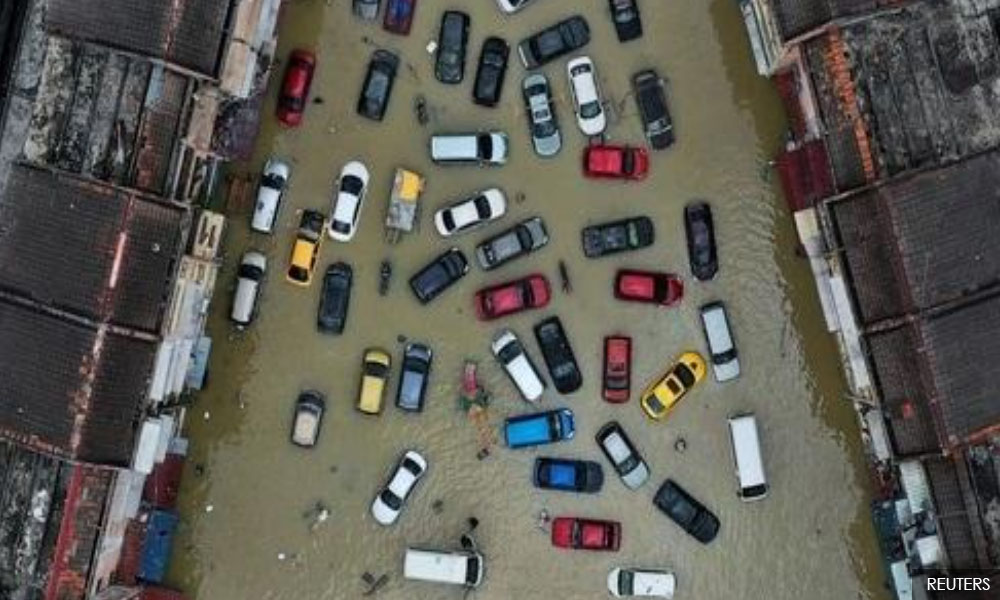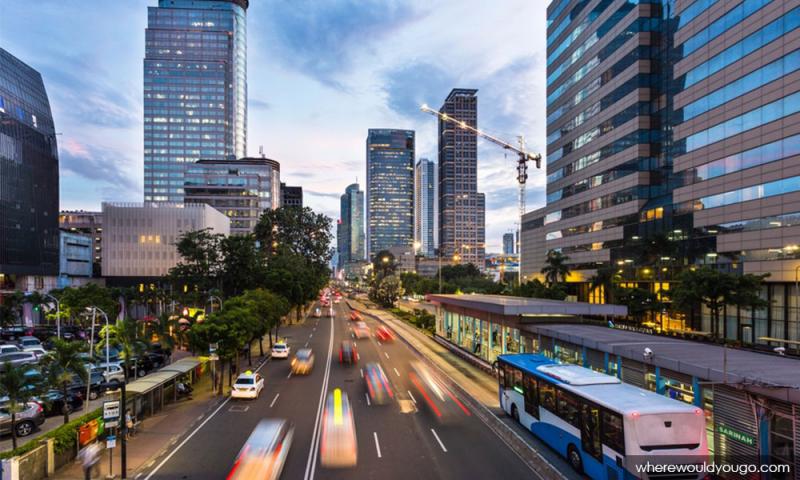Two ways to fight land subsidence
COMMENT | Cities all over the world are sinking.
In Southeast Asia, the rapid growth of megacities has led to a pressing design problem that many governments are only just starting to address. Jakarta is considered the world's fastest sinking city, with some areas experiencing subsidence of up to 15cm per year.
With 40 percent of the city already below sea level, it is predicted that by 2050 95 percent of North Jakarta will be underwater.
Bangkok and Ho Chi Minh City are also sinking, with subsidence rates of up to 2cm and 5cm per year respectively. Some areas in Bangkok may be sinking even faster due to the heavy use of the aquifer system (two million cubic metres a day) and the weight of buildings.
Urban sinking, also known as land subsidence, refers to the gradual sinking of the land surface in urban areas. It is caused by natural and human-made factors including groundwater extraction, construction works, soil consolidation and geological processes.
Land subsidence is a human-induced event. Of all the cases of land subsidence worldwide, 77 percent are caused by human activities, with groundwater extraction accounting for 60 percent.
Excessive extraction of groundwater often causes land subsidence in urban areas due to the increasing demand for water due to rapid urbanisation.
The construction of heavy buildings and infrastructure and changes in land use cause soil compression leading to land subsidence. The most significant consequence of land subsidence is more intense city flooding.
When groundwater is extracted faster than the recharge rate of the aquifer system, it causes the land to subside, endangering buildings and urban infrastructure.
In California’s San Joaquin Valley, the land is sinking by 0.3m per year due to excessive pumping of groundwater for a commercial orchard which has caused permanent subsidence and landslides in the area.
Land subsidence damages critical infrastructure such as buildings and roads, changes drainage patterns and increases the risk of flooding. It can also affect groundwater availability with significant environmental implications for cities and their inhabitants.

Innovative technology offers solutions
Innovative solutions are being explored to combat this issue. Two such methods are artificial recharge and deep soil mixing.
Artificial recharge involves injecting water into depleted aquifers to replenish them, thus reducing the need for excessive pumping and preventing further subsidence.
Deep soil mixing involves injecting stabilising agents deep into the ground to reinforce the soil and prevent land subsidence caused by soil compression.
While these methods have shown promising results, they require careful planning and significant investment. Nevertheless, they offer hope for mitigating the damaging effects of land subsidence on communities and infrastructure.
Using alternative construction techniques such as lightweight building materials and foundation systems can help reduce the weight of buildings thus minimising the risk of land subsidence.
Ground improvement techniques, such as deep soil mixing and soil stabilisation can help reinforce weak or soft soils to enhance the stability of structures and prevent subsidence in cases where a mass of buildings is unavoidable.
Deep soil mixing involves mechanically blending weak soils with a cement-like binder to enhance their properties without compaction to increase the strength and stiffness of the ground. Mechanically mixing the soil with cement or other binders can increase the ground's strength and stability.
The technique can be used in various geotechnical applications including for highways, railways, airports, embankments, levees and industrial facilities. Deep soil mixing can address this problem by improving the soil's load-bearing capacity and reducing its susceptibility to settlement.
As land subsidence becomes more common in urban areas with intense groundwater extraction, engineers can turn to deep soil mixing as a potential solution.
Two main methods are dry deep soil mixing and wet deep soil mixing. Each involves mixing a binding agent with the soil, such as cement, lime, or biodegradable materials, to enhance the soil's properties. The choice of method depends on the soil conditions, site characteristics and the desired improvement in soil properties.
Studies have shown that deep soil mixing stabilised the ground and reduced subsidence rates in areas where peat and other organic materials were being extracted. It’s been widely used in China and Europe for various construction projects such as embankments, deep excavations, retaining structures and ground improvement.
Cities rely heavily on groundwater and excessive pumping can cause the soil to compress and settle, resulting in land subsidence. Urban areas are particularly vulnerable to this problem due to the high concentration of buildings and paved surfaces which increase the weight on the soil surface and contribute to soil compaction.
Reducing water extraction, promoting water conservation and implementing groundwater recharge can mitigate the effects of subsidence in cities.
Groundwater recharge involves intentionally replenishing groundwater resources through various techniques such as artificial recharge which adds water to the ground to replenish depleted groundwater resources.
This process is used to increase the volume of water in aquifers, improve groundwater quality, and prevent land subsidence caused by excessive groundwater extraction.
Various methods can be used for artificial recharge, including redirecting water over the land surface using canals, infiltration basins, or ponds, installing irrigation furrows or sprinkler systems or directly injecting water into the subsurface through injection wells.
One study confirmed the effectiveness of artificial recharge in stabilising land subsidence in Bangkok. In the Kathmandu Valley which is also sinking, the injection well method was used to recharge the groundwater.
These case studies demonstrate the potential of various groundwater recharge methods for stabilising land subsidence caused by groundwater extraction. These methods can not only address land subsidence but also provide an alternative source of water for irrigation and domestic use as well as improve groundwater quality.
Utilising deep soil mixing and artificial recharge is a sustainable approach to building more resilient cities.
With the proper implementation of deep soil mixing and artificial recharge, we can create a future where sinking cities are a thing of the past and our urban landscapes are better equipped to handle the challenges of the 21st century.
TAMILSALVI MARI is programme director and senior lecturer in architecture at Taylor’s University. Salvi’s research area revolves around investigating humane design-the interaction between humans, the built environment and the natural environment focusing on current societal and environmental needs. She declares no conflict of interest.
Originally published under Creative Commons by 360info™.
The views expressed here are those of the author/contributor and do not necessarily represent the views of Malaysiakini.
RM12.50 / month
- Unlimited access to award-winning journalism
- Comment and share your opinions on all our articles
- Gift interesting stories to your friends
- Tax deductable
